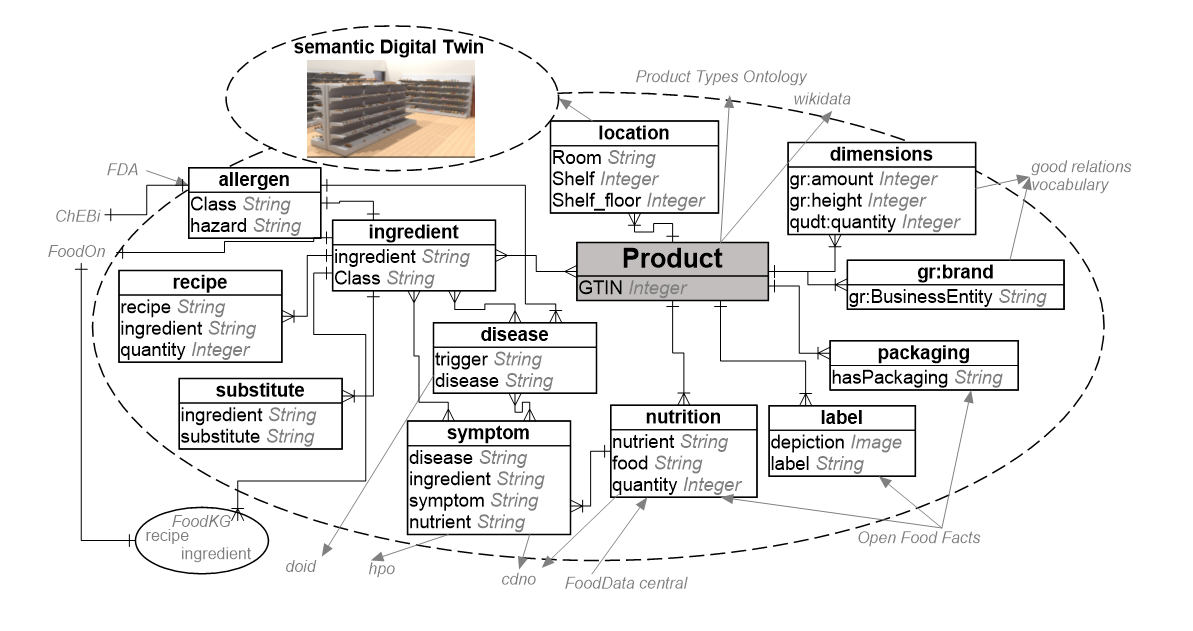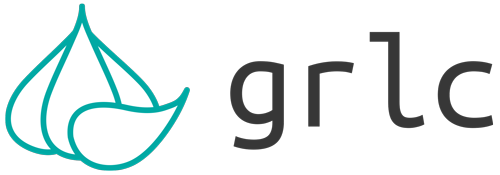ProductKG - A product knowledge graph
ProductKG is a knowledge graph created from Web information, interlinking different ontologies designed for retail and household applications. It is based on a merged product taxonomy reflecting the product classification in grocery stores and drugstores that is linked to a product location ontology created from a robot belief state while performing stocktaking in a retail store as depicted in the following picture:

Kümpel, M., Mueller, C.A., Beetz, M. (2021). Semantic Digital Twins for Retail Logistics. In: Freitag, M., Kotzab, H., Megow, N. (eds) Dynamics in Logistics. Springer, Cham.

Kümpel, M. and Beetz, M. (2023). ProductKG: A Product Knowledge Graph for User Assistance in Daily Activities. In: Ontology Showcase and Demonstrations Track, 9th Joint Ontology Workshops (JOWO 2023), co-located with FOIS 2023. 19-20 July, 2023, Sherbrooke, Quèbec, Canada, 2023.
The product location ontology therefore stores inventory data like stock and price of products as well as their positions relative to shelves (instead of coordinates). We use the KnowRob knowledge processing system for creation of the location ontology. In KnowRob, a robot can access specific position information of the perceived objects. The product taxonomy classifies products that were recognized during stocktaking. It is linked to an ingredients classification based on string matching, which is connected to an allergen classification. Ingredients also link to substitutes, diseases, symptoms and treatments in form of nutritients. The product taxonomy is linked to further product information like name and place of production in product information, product label, brand or product dimensions, i.e. dimensions of product packaging as well as product weight/ filling information. Since food products play an important role in daily activities, ProductKG also includes nutrition information and provides a user profile and quantity ontology for personalisation. All this can be used for daily acitivity applications on robots, mobile phones or smart glasses, for example.
Querying the knowledge graph
The knowledge graph is publicly available here and on triply, many thanks to the knowledge representation and reasoning group at the Vrije Universiteit Amsterdam.
Predefined queries

We created some predefined queries for everyone to test all versions of ProductKG via the ProductKG grlc api. grlc is a git repository linked data API constructor that automatically builds Web APIs using shared SPARQL queries (grlc on github)
Version 1.0
ProductKG via triply SPARQL api
Reference
Please cite this as:
@article{kumpel2023productkg,
title={ProductKG: A Product Knowledge Graph for User Assistance in Daily Activities},
author={K{\"u}mpel, Michaela and Beetz, Michael},
booktitle={FOIS'23: Ontology Showcase and Demonstrations Track, 9th Joint Ontology Workshops (JOWO 2023), co-located with FOIS 2023, 19-20 July, 2023, Sherbrooke, Québec, Canada},
url={https://ceur-ws.org/Vol-3637/paper52.pdf},
volume={3637},
year={2023},
keywords = {knowledge representation, product knowledge, daily applications}
}
Disclaimer
This ProductKG is made available under the Open Data Commons Attribution License.
Please cite it as:
Kümpel, M. and Beetz, M. (2023). ProductKG: A Product Knowledge Graph for User Assistance in Daily Activities. In: Ontology Showcase and Demonstrations Track, 9th Joint Ontology Workshops (JOWO 2023), co-located with FOIS 2023. 19-20 July, 2023, Sherbrooke, Quèbec, Canada, 2023.
This knowledge graph has been created by the Institute for Artificial Intelligence at the University of Bremen. Please contact Michaela Kümpel for further info or collaboration: michaela(dot)kuempel(at)uni-bremen(dot)de

